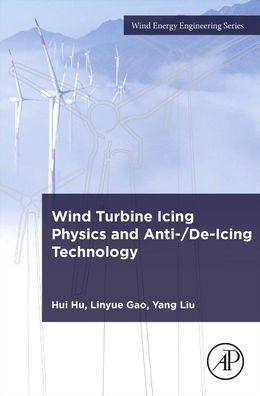In addition, comprehensive lab experimental studies are explored, along with a suite of advanced flow diagnostic techniques, a detailed overview of the improvements, and the advantages and disadvantages of state-of-the-art ice mitigation strategies. This new addition to the Wind Energy Engineering series will be useful to all researchers and industry professionals who address icing issues through testing, research and industrial innovation.
In addition, comprehensive lab experimental studies are explored, along with a suite of advanced flow diagnostic techniques, a detailed overview of the improvements, and the advantages and disadvantages of state-of-the-art ice mitigation strategies. This new addition to the Wind Energy Engineering series will be useful to all researchers and industry professionals who address icing issues through testing, research and industrial innovation.

Wind Turbine Icing Physics and Anti-/De-Icing Technology
222
Wind Turbine Icing Physics and Anti-/De-Icing Technology
222
Product Details
| ISBN-13: | 9780128245323 |
|---|---|
| Publisher: | Elsevier Science |
| Publication date: | 09/01/2022 |
| Series: | Wind Energy Engineering |
| Pages: | 222 |
| Product dimensions: | 6.00(w) x 9.00(h) x (d) |
